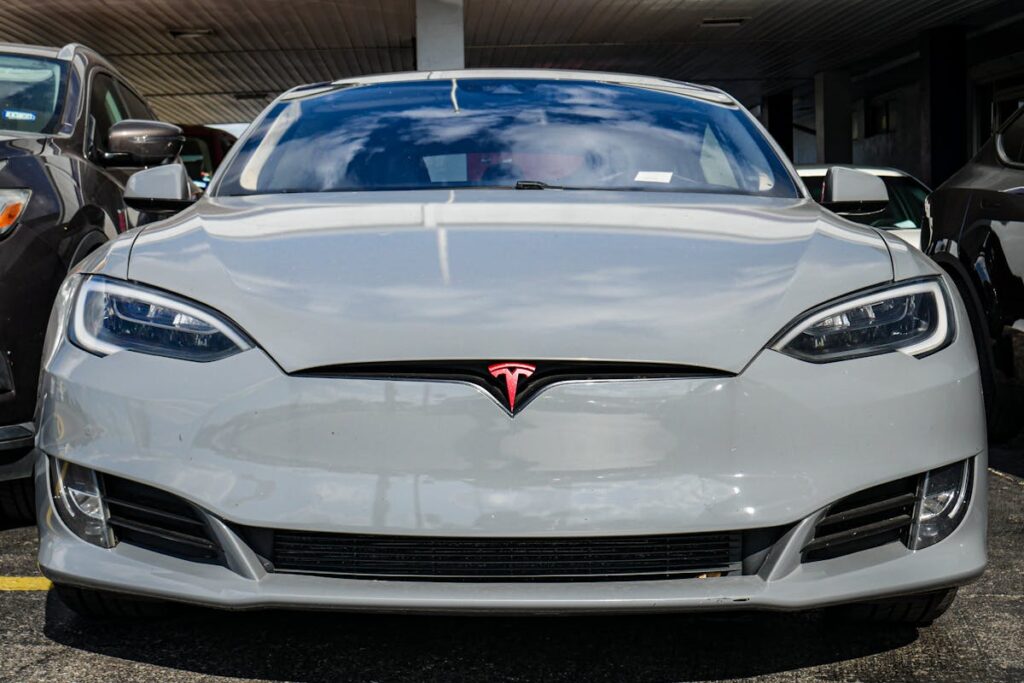In the vast landscape of automotive history, certain vehicles stand as significant milestones that have not only redefined the industry but have also impacted society and technology at large. From the Ford Model T, which democratized personal transportation, to the Tesla Model S that represented a seismic shift towards sustainable mobility, each car symbolizes a pivotal moment. As we explore these automotive milestones further, it invites us to reflect on how these vehicles have shaped our world and what they indicate about the future of this constantly evolving industry.
Key Takeaways
- The Ford Model T revolutionized auto production, reducing costs and making cars accessible to the middle class.
- The Volkswagen Beetle and Chevrolet Corvette became cultural icons, symbolizing freedom and American power respectively.
- Tesla Model S and Toyota Prius marked a shift towards sustainable technology, offering electric and hybrid options.
- Lamborghini Miura transformed automotive design with its blend of aggression and elegance, setting new benchmarks for speed and power.
- Milestone cars like these have significant cultural, historical, and market impacts, reshaping consumer preferences and industry standards.
The Groundbreaking Ford Model T
The Ford Model T, an iconic symbol of the 20th century automotive revolution, was a marvel of innovation and engineering. The vehicle, produced by the Ford Motor Company from 1908 to 1927, was not only a technical masterpiece but also a catalyst for the affordability revolution in the auto industry.
Henry Ford’s genius lay not only in creating a reliable, easy-to-drive car, but also in perfecting the mass production methods that made it affordable for the average American. The assembly line process, which Ford did not invent but greatly improved upon, allowed for the rapid, efficient, and inexpensive production of the Model T. This mass production technique dramatically lowered the cost per unit, making the Model T the first car accessible to the middle class.
The Model T’s impact extended beyond the automotive industry. It revolutionized American society, transforming the country from primarily rural to increasingly urban. The affordability revolution it ignited changed the consumer culture, making car ownership a norm rather than a luxury. The Ford Model T, with its innovative design and revolutionary production methods, truly marked a turning point in history.
Volkswagen Beetle: Icon of the 60s
Heralded as the “people’s car,” the Volkswagen Beetle emerged as an icon of the 1960s, symbolizing a blend of German engineering prowess and counterculture spirit. Its cultural impact was profound, becoming synonymous with freedom, nonconformity, and the burgeoning youth movement.
The Beetle’s design evolution was a demonstration of form following function. It maintained its distinctive rounded shape, inspired by the vision of Ferdinand Porsche and Adolf Hitler to provide a reliable, affordable car for the German masses. However, over time, it incorporated modern design elements that enhanced performance and comfort, without losing its unique character.
The Beetle’s air-cooled rear engine, a departure from the conventional front-engine layout, contributed to its unique driving experience. The compact design and simplicity of the mechanics meant it was easy to maintain and repair, further enhancing its appeal to the masses.
In the United States, the Beetle’s cultural impact was magnified by its association with the hippie movement. Its affordability, reliability, and unconventional design made it a symbol of rebellion against the mainstream. The Beetle’s influence extended beyond the automotive world, permeating popular culture and becoming a symbol of an era defined by social and cultural change.
Chevrolet Corvette: American Sports Car Revolution
Initiating a revolution in American sports cars, the Chevrolet Corvette emerged in the 1950s as a symbol of power, speed, and American ingenuity. This two-seater vehicle, with its sleek design and robust performance, was a radical departure from the conventional American family cars of the era.
The Corvette’s legacy began with its debut at the 1953 Motorama show in New York, where it captured the imagination of car enthusiasts and industry experts alike. Its fibreglass body, which was unusual at that time, and its potent V8 engine marked a significant milestone in the sports car evolution. The Corvette was instrumental in altering perceptions about American cars – it proved that they could be as stylish, fast, and sophisticated as their European counterparts.
Over the years, the Corvette has undergone multiple transformations, each enhancing its performance and cementing its status as a premier sports car. The sleek lines of its design, the roar of its engine, and the thrill of its speed are all part of the Corvette legacy, a demonstration to American automotive innovation. This legacy continues to inspire and shape the evolution of sports cars even today.

The Electric Milestone: Tesla Model S
Marking a paradigm shift in the auto industry, Tesla’s Model S has revolutionized the world of electric vehicles. It is not just a car but a symbol of sustainable technology, translating the dream of a greener future into a tangible reality.
Introduced in 2012, the Model S was the first electric car to conquer the challenges of range anxiety, achieving over 300 miles on a single charge. Its impressive acceleration and high-speed performance debunked the perception that electric cars were sluggish, making it an instant hit with consumers.
What sets the Model S apart is its commitment to autonomous driving. Equipped with an advanced autopilot system, it boasts features such as self-parking, adaptive cruise control, and lane-keeping assist. This platform has not only elevated the driving experience but also paved the way for future developments in self-driving technology.
In essence, the Model S is a game-changer. It has redefined the electric vehicle market, proving that a car can be both environmentally friendly and exciting to drive. The Model S is, without doubt, a true electric milestone in automotive history.
Honda Accord: Benchmark for Midsize Sedans
While the Tesla Model S has left an indelible mark on electric vehicle technology, the Honda Accord has similarly distinguished itself in the domain of midsize sedans. Introduced in 1976, the Accord’s design evolution has consistently showcased Honda’s commitment to innovation, functionality, and consumer demand. The Accord’s aesthetic and mechanical improvements have greatly influenced the midsize sedan market.
The first-generation Accord, with its compact, fuel-efficient design, resonated with consumers during the oil crisis of the 1970s. As the generations progressed, the Accord grew in size and sophistication, reflecting changing market trends and consumer expectations. The addition of safety features like anti-lock braking systems and airbags, along with the integration of technology for enhanced performance and comfort, positioned the Accord as a leader in its segment.
The Accord’s market impact cannot be overstated. It has been a top-selling car in the U.S for decades, demonstrating Honda’s ability to adapt to market changes and consumer preferences. The Accord’s success has set a benchmark for midsize sedans, influencing the design and features of its competitors. The Honda Accord indeed represents a notable milestone in the history of automobiles.
Toyota Prius: Dawn of Hybrid Technology
Undeniably, the launch of the Toyota Prius in 1997 heralded a new era in the automotive industry: the dawn of hybrid technology. The Prius was a radical departure from conventional vehicles, embodying the pioneering spirit of hybrid innovation. It combined a traditional internal combustion engine with an electric motor, a concept previously unexplored on a commercial scale.
The Prius’ hybrid powertrain was a revolutionary development, striking a balance between performance and efficiency. It mitigated the limitations of pure electric vehicles, primarily range anxiety, while drastically reducing the environmental impact associated with gasoline-powered cars. Its regenerative braking system, a hallmark of hybrid technology, further enhanced fuel efficiency by converting kinetic energy into electrical power.
The Prius’ introduction set the stage for a sea change in global automotive trends. It was the first major step towards environmentally conscious transportation, sparking a shift in consumer and industry perceptions alike. Today, hybrid and electric vehicles are not just alternatives, but are becoming the norm, largely thanks to the trail blazed by the Toyota Prius. The Prius’ legacy underscores the significant role that innovative technology plays in shaping the future of the automotive industry.
The Supercar Pioneer: Lamborghini Miura
Revolutionizing the world of high-performance automobiles, the Lamborghini Miura burst onto the scene in 1966. An icon of automotive engineering, this supercar set the standard for all that followed. Its mid-engined layout, an innovation that would become a staple in the supercar segment, coupled with its breathtaking aesthetics and remarkable speed, firmly established the Miura legacy.
The Lamborghini design, characterized by its unique blend of aggression and elegance, was a game-changer in the automotive industry. The Miura boasted a sleek, aerodynamic silhouette, ensuring optimum speed and performance. Its Bizzarrini V12 engine, nestled just behind the two-seater cabin, produced an astonishing 350 horsepower, making it the fastest production road car of its time.
The Lamborghini Miura was not just a car; it was a statement, a demonstration of the audacious ambition of Ferruccio Lamborghini. It demonstrated that a car could be more than a utility, it could be an object of desire, a work of art, and a symbol of prestige. The Miura’s impact on the global automotive industry is undeniable, and its legacy continues to inspire and influence the design and performance of supercars today. To dive deeper into the beginnings of legendary cars like the Miura, you can learn about the beginnings of legendary cars that left a mark on the industry.
Frequently Asked Questions
What Other Innovative Models Are Produced by the Manufacturers of These Milestone Cars?
Manufacturers of milestone vehicles continue to innovate, producing models with advanced features like electric propulsion and autonomous driving capabilities. These innovations guarantee their sustained relevance and leadership in the rapidly evolving automotive industry.
How Did These Milestone Cars Impact the Overall Automotive Industry Globally?
The milestone vehicles markedly influenced the global automotive industry, sparking an electric revolution and spurring design evolution. They set new standards in efficiency, aesthetics, and technology, shaping the trajectory of future car development worldwide.
Are There Any Special Editions or Limited Versions of These Milestone Cars?
Yes, several milestone vehicles have had special editions with unique features or limited production runs. These versions often boast superior capabilities, exclusive designs, or commemorative elements, highlighting their significance within the broader automotive landscape.
What Are the Current Values of These Vintage Milestone Cars in the Collectors Market?
The current values of vintage milestone cars greatly vary, influenced by factors such as rarity, condition, and collector trends. Detailed analysis of vintage valuation data reveals a robust market, with significant appreciation for well-preserved models.
What Safety Features Did These Milestone Cars Introduce That Are Still Used Today?
Milestone vehicles introduced significant safety features, such as seat belts, that are mandatory today. Additionally, these cars were pioneers in crash testing, providing critical data to enhance vehicle safety and reduce injury in accidents.

